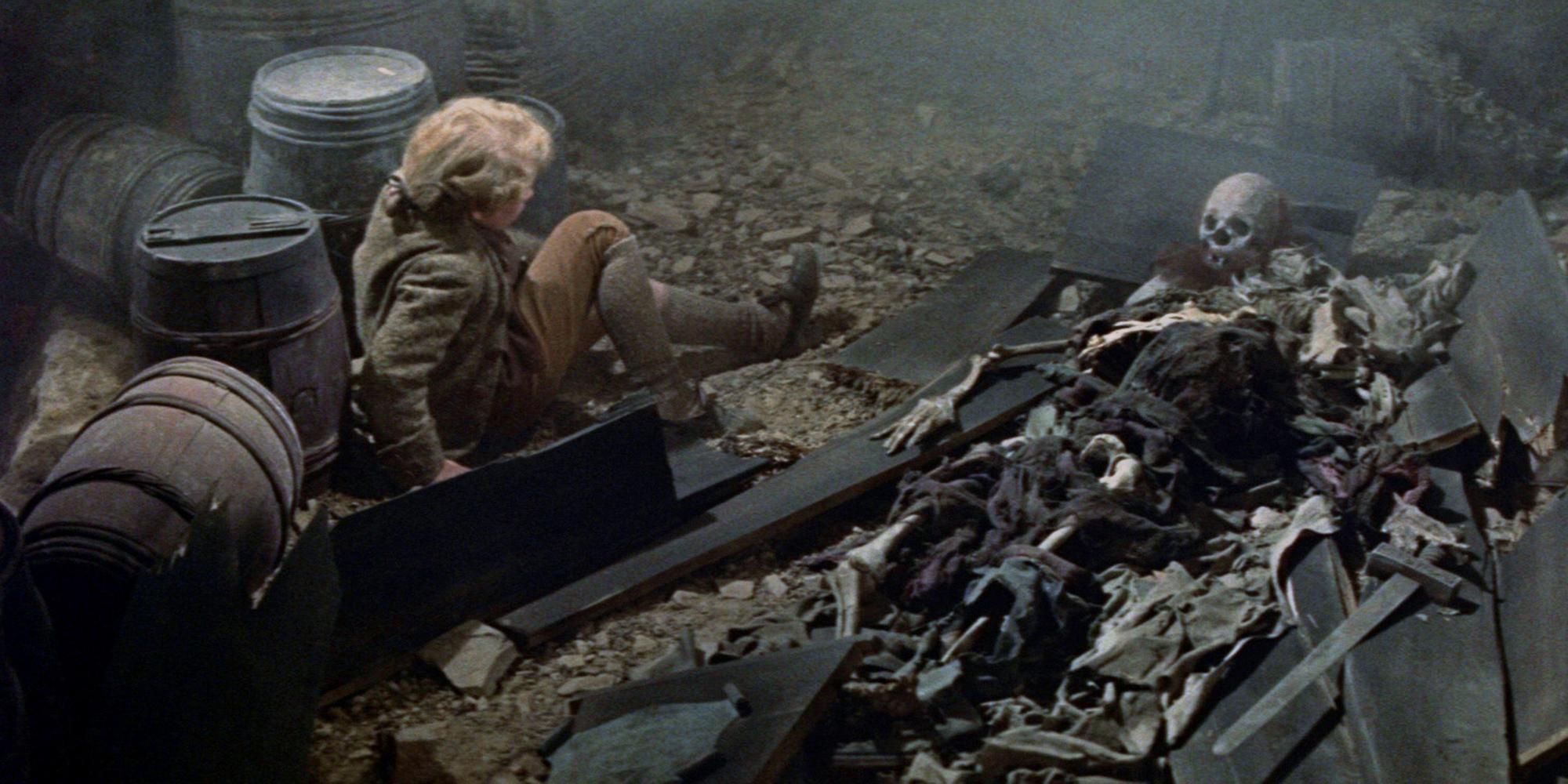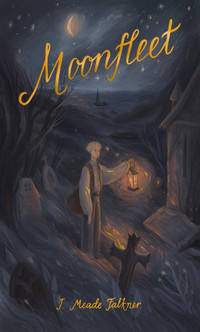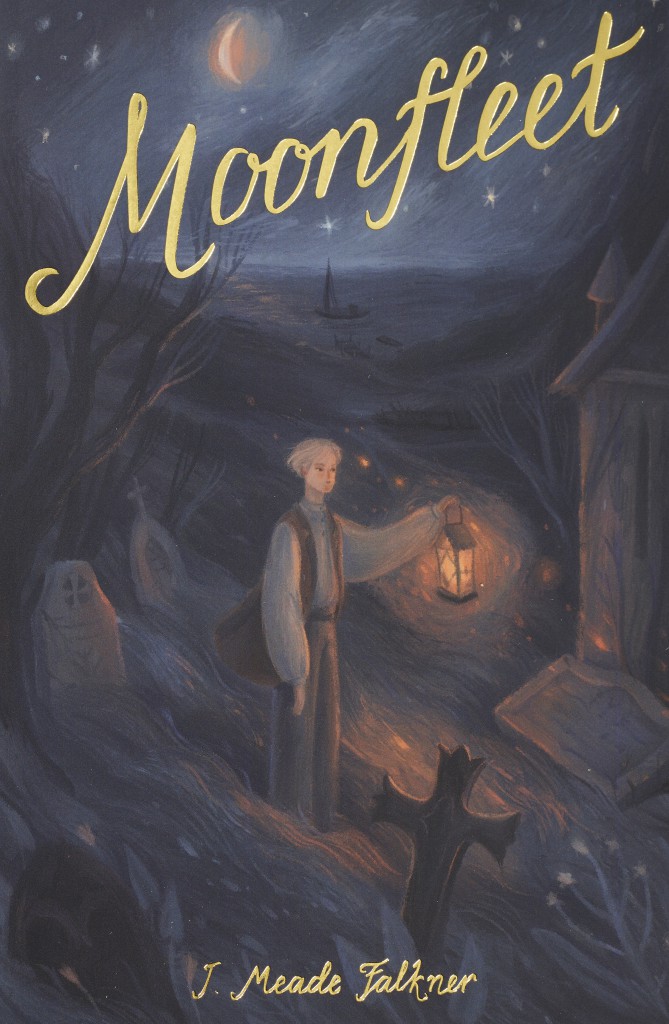
David Stuart Davies looks at Moonfleet
“And more than once I have stood rope in hand in that same awful place, and tried to save a struggling wretch; but never saw one come through the surf alive, in such a night as he saved me.” – David Stuart Davies looks at a classic adventure story.
By comparison with other Victorian adventure yarns, Moonfleet is an unfairly neglected classic tale. It has many elements found in the more famous Treasure Island by Robert Louis Stevenson. There are rascally seafaring folk, a hidden treasure, a shipwreck and the central character is a young boy.
Moonfleet, published in 1898, was written by John Meade Falkner (1858 – 1932). Remarkably Falkner only published three works of fiction, but each was highly successful. The Lost Stradivarius (1895) is an excellent atmospheric ghost story very much in the style of M. R. James, and The Nebuly Coat (1903) is a tale of mystery and murder in a quiet cathedral town. Actually, Meade wrote a fourth novel but he left the completed manuscript on a train and he never recovered it. The writing was, for Meade, more of a hobby than a professional pursuit. His main focus in life was as a businessman and at this he was extremely successful. He became chairman of the arms manufacturer Armstrong Whitworth during World War I. Nevertheless, it cannot be denied that he was a talented author and Moonfleet, a thrilling novel of eighteenth-century Dorset smugglers is Meade’s masterpiece. Featuring a youthful hero, the novel has tended to be regarded purely as a children’s book but like Stevenson’s rousing tales such as Treasure Island and Kidnapped, which have an appeal for all ages, are strong on character and action and the same could be said of Moonfleet.
The novel is tense and atmospheric from its opening pages set in a cemetery, which, combined with vivid descriptions of a dying and neglected village, sets the tone of the narrative from the outset and is an omen of the dark events to come.

Moonfleet is the name of the village where the young orphan John Trenchard lives with his aunt, a strict and humourless individual who barely tolerates his presence. Falkner used the local geography of Dorset, including Carisbrooke Castle, only changing some of the place names. The titular village is based on East Fleet, close to Chesil Beach. In the novel, local legend tells of the notorious pirate John ‘Blackbeard’ Mohune who is buried in the family crypt in the churchyard. He is reputed to have stolen a diamond from King Charles I and hidden it. John discovers a sinkhole by the crypt, which leads down to an underground passage. He investigates and finds himself in a subterranean chamber with coffins on shelves and casks on the floor. He realizes that his friends in the village are smugglers, and this is their hiding place. Another more startling discovery is the coffin of Blackbeard himself and a locket around his neck which holds a piece of paper with verses from the Bible, which John suspects contain a clue to the secret location of the precious diamond. And so, as the mystery grows so do John’s adventures as well as his search for the treasure, he also becomes involved with the smugglers and their conflict with the revenue men. As the novel unfolds, these two interwoven themes resolve into a third and richer one, with the friendship and suffering of both Trenchard and his friend Elzivir Bock, the taciturn landlord of the Mohune Arms who takes on the role of father figure to the young John. This inn is nicknamed Why Not? – a pun on the Mohune coat of arms which represents the shape of the letter’ Y’.
The events are related in the first person, a technique that reveals Meade’s skill in characterization for he is able to capture the maturation of John Trenchard and his development from naïve youth to a guilt-ridden and almost damaged adulthood. The psychological accuracy of this journey is one of the star elements of the book.
Strangely, filmmakers were slow to tackle this novel but in the 1950s there was a rash of pirate films from the Hollywood studios and MGM added Moonfleet to this swashbuckling bandwagon. The producer, John Houseman, observed later: ‘It was a grim story, a real adventure story about pirates and a little boy who accidentally got himself involved with them. There was no sex. But then we began to have fun with it and embroider it.’ And embroider the story they did. While a handful of scenes from the book survived, major changes were made to the plot including the introduction of a new major character, a rogue gentleman, Jeremy Fox (played by Stewart Granger) who acted as a mentor to the young hero, renamed Jon Muhone, played by Jon Whiteley who was only nine years old at the time. The film was directed by Fritz Lang, the celebrated German auteur, who was usually associated with grim film noir vehicles. He certainly seems to have been out of his comfort zone with Moonfleet and the film was a critical flop and a box office disaster.
The BBC adapted the novel as a television serial under the title Smuggler’s Bay in 1964. The most recent manifestation of Meade’s story was in 2016 when Sky1 filmed a two-part TV adaptation starring Ray Winstone as Elzivir Block and Anuerin Barnard as John Trenchard. While more of the plot of the book remains than in the 1955 movie, it still bears little relation to the original. It would seem that the structure of the novel with its cunning blend of juvenile adventure tropes with the more adult themes and authentic historical elements is difficult to meld together on the screen into a satisfactory whole. In the end, it may well be that Meade created a work of fiction that is best consumed in book form rather than in an adulterated dramatized version.
Main image from the Fritz Lang film adaptation of 1955. Credit: TCD/Prod.DB / Alamy Stock Photo
Smaller image: Our new Exclusive Collection edition is now available
Books associated with this article

Moonfleet
J. Meade Falkner
